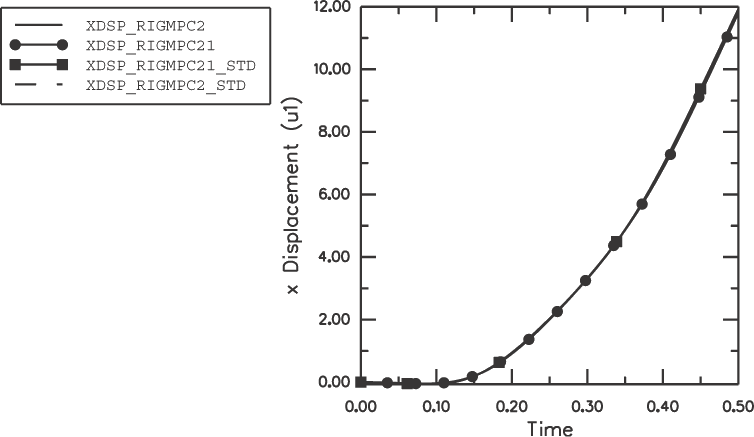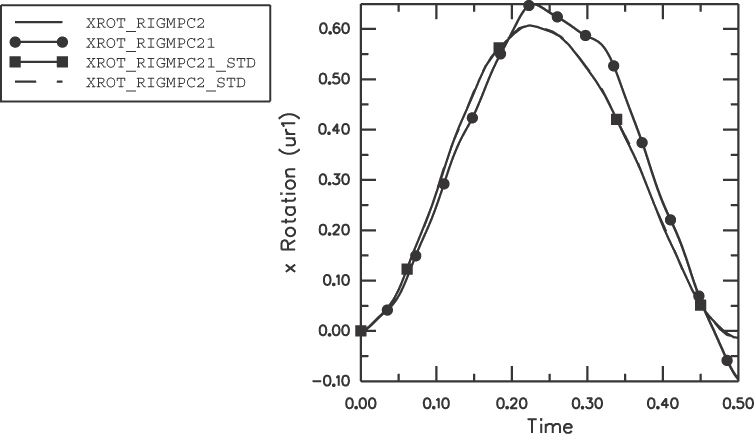Elements tested
S4R
ProductsAbaqus/StandardAbaqus/Explicit Elements testedS4R Features testedUse of rigid body with TIE node set to define MPC between deformable elements. Problem descriptionThe model consists of two identical rectangular plates that lie parallel to the x–z plane and are initially separated by a distance of 1 m in the y-direction (see Figure 1). Each plate is modeled with S4R elements. Three pairs of nodes along the edges—node 1 of the bottom plate and node 10 of the top plate, node 9 of the bottom plate and node 90 of the top plate, node 4 of the bottom plate and node 40 of the top plate—are combined to form three distinct rigid bodies by including each pair in a TIE NSET. Concentrated loads of magnitude 1.0 × 105 N are applied in the positive z- and positive x-directions at nodes 20, 70, and 30 of the top plate. The results are compared to the solution of the corresponding MPC problem. In the MPC problem three BEAM-type MPCs are defined between the corresponding nodes of the top and bottom plates. Results and discussionThe final configuration for the problem is shown in Figure 2. The bottom plate moves with the top plate so that the final configuration is similar to the original configuration except for a unified rotation and translation. This is because the rigid body TIE NSET constrains both the displacements and the rotations of the nodes that belong to it. The results obtained using rigid body node sets closely match those obtained from solving the corresponding MPC problem. From Figure 3, Figure 4, and Figure 5 it is clear that the leading characteristics of the solution—the -displacement, the -displacement, and the -rotation—are almost identical for the problem solved with rigid bodies and the corresponding BEAMMPC problem. The differences observed in the -rotation between Abaqus/Explicit and Abaqus/Standard are due to the different formulations used in the respective codes. Input filesAbaqus/Standard analysis
Abaqus/Explicit analysis
Figures     | |||||||